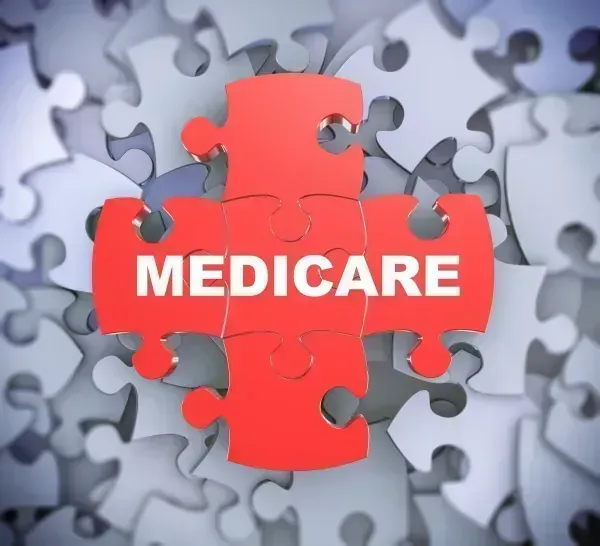MAC Debunks 8 Common Medicare Myths

Tip: There’s more to Medicare than just Part B. If you think that Medicare Advantage is just a supplemental program, you could be falling under the spell of one of the most common Medicare myths. That was the word from CGS Medicare’s Patsy Schwenk, who outlined some of the most critical facts about the Medicare program during the MAC’s “Medicare Basics” webinar. Read on to find out exactly what the specifics are when it comes to billing the Medicare program. Myth 1: MACs Are Run by the Government Because Medicare Administrative Contractors (MACs) process your claims, you may think they’re owned by the government, but that’s not the case, Schwenk says. “The MAC is a private insurer that has been awarded a geographic jurisdiction to process Part A and Part B claims,” she maintains, adding that MACs are responsible for: Myth 2: Medicare Only Applies to Those Over the Age of 65 Although Medicare does cover those who are 65 and older, it also covers certain beneficiaries under the age of 65 with disabilities and those at any age with end-stage renal disease (ESRD). To qualify for Medicare, the beneficiary must be a U.S. citizen or lawfully present in the U.S. and must live in the U.S. for five straight years, Schwenk says. Myth 3: MACs Determine the Statutorily Noncovered Services Medicare covers medically necessary services, which means that the item or service is needed for the diagnosis or treatment of a medical condition. Examples are physicians’ professional services, diagnostic tests and X-rays, mental health care, physical therapy, and more, suggests Schwenk. There are also some statutorily noncovered services that are part of the Medicare program, and those are named by the Centers for Medicare & Medicaid Services (CMS) in the Medicare Carriers Manual — they are not determined by the MAC. “I always say the noncovered items are things we never ever pay for because it’s actually written in the Medicare law that these are things we do not pay for,” Schwenk advises. Examples include acupuncture, cosmetic surgery, hearing aids, health care rendered outside of the U.S., and services not reasonable and necessary, she mentions. Myth 4: Medicare Only Consists of Parts A and B In addition to Medicare Part A and Part B, the program also includes Part C and Part D, Schwenk indicates. The four elements are as follows: Part A: Hospital coverage. “That would include inpatient hospitals, SNFs, hospice, and some home health services,” she said. Part B: Medical coverage. This includes “physician services, outpatient care, durable medical equipment, all of your preventive services, and some additional home health services,” explains Shwenk. Part C: This is also known as Medicare Advantage plans. “These basically replace Medicare Parts A and B. A Medicare patient would not have Parts A, B, and C. Usually they would have either A and B or C. Advantage plans are Medicare-approved private insurance companies that offer all services and may provide prescription drug coverage and other benefits,” she notes. Part D: Prescription drug coverage. “If someone has A and B or traditional Medicare, they will also have a Part D plan to help pay for their prescription drug costs. Usually a Part C plan includes prescription drug programs.” Myth 5: Medicare Advantage Is a Medicare Supplemental Policy Many people are confused about what exactly a Medicare Advantage (MA) plan refers to, Schwenk said. The reality is that the MA plans “are an alternative to the traditional A and B. They are not a supplement,” she explains. With a supplemental policy, a patient is covered by Medicare Parts A and B, and then also gets a secondary, supplemental policy to pay for out-of-pocket costs that Medicare won’t cover. An MA plan, on the other hand, replaces Parts A and B. “We get a lot of questions about Advantage plans, and we do not process those claims,” Schwenk says of the MAC. “Because it’s a replacement to Parts A and B, those claims do not go to a MAC. The claims go to the Advantage plan. Any questions you have for a claim processed through an Advantage plan has to go to that company.” Myth 6: Medicare Patients Can Change Plans Any Time Although Medicare patients do have the ability to change their insurance programs, they must wait until the enrollment period to do that. “Every year, a Medicare beneficiary can change plans between Oct. 15 and Dec. 7,” acknowledges Schwenk. “During this time, the patient can keep the same insurance if they want to, but if they’re in original Medicare, they can switch to an Advantage plan or vice versa, or they can switch to a different Medicare Advantage plan.” Reminder: Coverage is effective the first day of the next calendar month. “So it’s very important, especially in November to February, to make sure you’re getting all their Medicare cards — everything in their wallets concerning Medicare — because it can change,” advises Shwenk. Also remember that you can only use the patient’s old Medicare number (their Social Security number) until the end of this year. Effective January 1, 2020, you’ll need to use the patient’s Medicare Beneficiary Identifier (MBI), which replaces the SSN-based number. “We have been accepting claims with these for quite some time now, and we want you to use it,” she notes. After January 1, “we will reject your claim if you don’t use the MBI,” she adds. Myth 7: Licensed Practitioners Can Immediately Bill Medicare Clinicians must enroll with Medicare before submitting claims, Schwenk said. To become a Medicare provider, physicians such as MDs, Dos, DPMs, and DCs can enroll. In addition, “non-physician practitioners, such as physician assistants, nurse practitioners, social workers, physical therapists, occupational therapists, audiologists, speech-language pathologists, and others can also enroll.” Plus: There are suppliers like ambulance companies, durable medical equipment suppliers, independent diagnostic testing facilities, and others that can enroll in the Medicare program. However, RNs and LPNs do not get Medicare numbers. “Before enrolling into Medicare, you have to obtain a national provider identifier (NPI), which you can apply for online,” she adds. Myth 8: Non-Par Providers Can’t Bill Medicare When you become a Medicare provider, you decide whether you want to participate in Medicare or not — but that doesn’t mean you’re barred from billing the Medicare program if you decide not to participate. If you say that you want to participate, “you are agreeing to accept Medicare’s fee schedule as payment in full,” cautions Schwenk. “So if Medicare’s allowed amount is $100, Medicare will pay $80 and the patient would pay $20 coinsurance and that’s all you will collect.” There are some advantages to participating with Medicare, she said. For instance, you get the full fee schedule amount, you’re set up for automatic crossover (the MAC processes the claim and sends the information to the supplemental insurers), and you’re included in the MEDPARD directory, where patients can look for providers in their area who accept assignment. About 95 percent of providers do participate in Medicare, she continues. Non-par: However, you can choose to be a non-par provider and not participate. If you are a non-par provider, you can still see Medicare patients and you still need to send in the Medicare claims on the patient’s behalf. “Participating and non-participating providers must follow the mandatory claim submission laws, which means you must submit the claim for payment to Medicare,” Shwenk notes. If you are a non-par provider, you can accept assignment on a claim-by-claim basis, but non-par providers do receive a five percent reduction in the fee schedule amount. “So in my previous example where I said if the fee schedule pays $100, a non-par provider would be starting out at just $95 instead,” she says.




